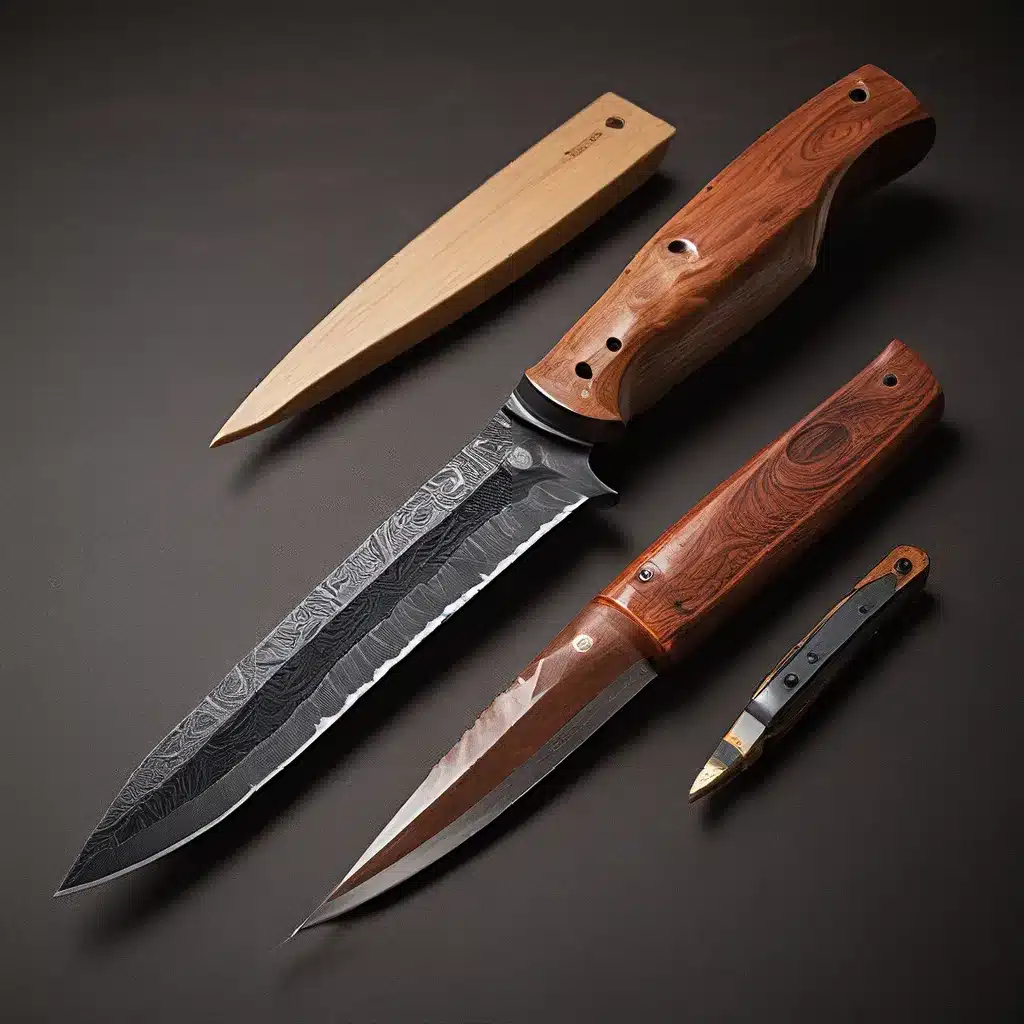
The Intricate Interplay of Form and Function
As I hold a knife in my hand, I’m struck by the way its design seems to transcend mere utility. The curve of the blade, the weight of the handle – these elements evoke a sense of artistry that extends far beyond its practical purpose. It’s as if the knife itself becomes a canvas, a medium for the expression of human creativity and cultural identity.
In many ways, the history of knife design is a reflection of the societies that have shaped it. From the primitive stone tools of our ancestors to the sleek, high-tech blades of today, the evolution of knives has mirrored the technological and aesthetic advancements of human civilization. Each culture has left its indelible mark, imbuing these everyday tools with symbolic meaning and cultural significance.
Uncovering the Symbolic Language of Knives
Consider the ceremonial knives of ancient civilizations, such as the Aztec macuahuitl or the Japanese tanto. These were not just implements for cutting and slicing; they were embodiments of power, status, and spiritual beliefs. The intricate patterns and elaborate decorations on these blades served as a visual language, conveying the values and worldviews of the societies that created them.
Similarly, the bowie knife, a classic American design, has become a symbol of rugged individualism and frontier spirit. Its distinctive shape, with a large, curved blade and a wooden or bone handle, evokes images of the Wild West and the self-reliant pioneers who tamed the untamed wilderness. The Fairbairn-Sykes commando knife, on the other hand, is forever associated with the covert operations of World War II, its sleek and functional design a testament to the efficiency and lethality of modern warfare.
Knives as Cultural Touchstones
But the influence of knife design extends beyond the realms of history and military might. In the realm of popular culture, the Balisong or ‘butterfly’ knife has become a symbol of urban toughness and street credibility, its fluid, acrobatic movements captivating audiences and sparking debates about its legality and social implications.
Likewise, the Swiss Army knife has become a ubiquitous symbol of practicality and resourcefulness, a multifunctional tool that has transcended its utilitarian origins to become a cultural icon. Its very existence speaks to the human desire to streamline and consolidate our tools, to create efficient and adaptable solutions to the challenges we face.
Exploring the Aesthetics of Knife Design
Yet, it’s not just the symbolic and cultural significance of knives that captivates us; their aesthetic qualities are equally compelling. The Santoku knife, a Japanese design renowned for its versatility and precision, is also admired for its clean lines and elegant simplicity. The Damascus steel blades, with their mesmerizing patterns and swirling textures, are prized not just for their strength and durability but also for their sheer visual beauty.
In the realm of custom knife-making, artisans have taken the art of blade design to new heights, creating one-of-a-kind masterpieces that blur the line between tool and sculpture. These knives are often treated as collector’s items, with their owners reveling in the craftsmanship and the stories they embody.
The Intersection of Technology and Tradition
As we move forward, the world of knife design continues to evolve, driven by technological advancements and the ever-changing needs of users. The rise of 3D-printed knives and the incorporation of high-tech materials like titanium and carbon fiber have opened up new realms of possibility, challenging our preconceptions about the nature of these tools.
Yet, even as we embrace these modern innovations, there remains a deep-seated appreciation for the traditional craftsmanship and time-honored techniques that have defined knife-making for centuries. The forged blades and hand-carved handles of master artisans still captivate us, reminding us of the enduring power of human skill and creativity.
Conclusion: Knives as Cultural Ambassadors
In the end, the story of knife design is not just about the evolution of a practical tool but the complex interplay of form, function, and cultural identity. These blades have become cultural ambassadors, embodying the values, traditions, and aesthetic sensibilities of the societies that created them.
As I hold this knife in my hand, I’m reminded of the rich tapestry of human history and the enduring power of design to shape our perceptions and experiences. It’s a humbling and inspiring realization, one that encourages me to look beyond the surface and delve deeper into the cultural significance of the everyday objects that surround us.
Perhaps, in doing so, we might just uncover the hidden stories and the profound insights that lie within the sharpened edges of our knives – and in the process, gain a richer understanding of ourselves and the world we inhabit.


